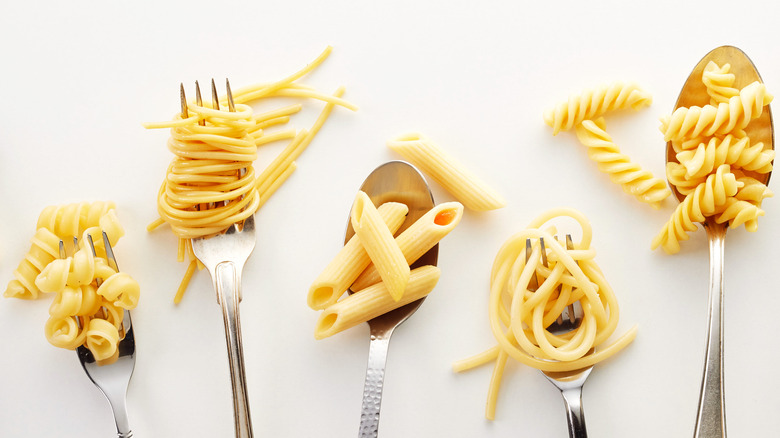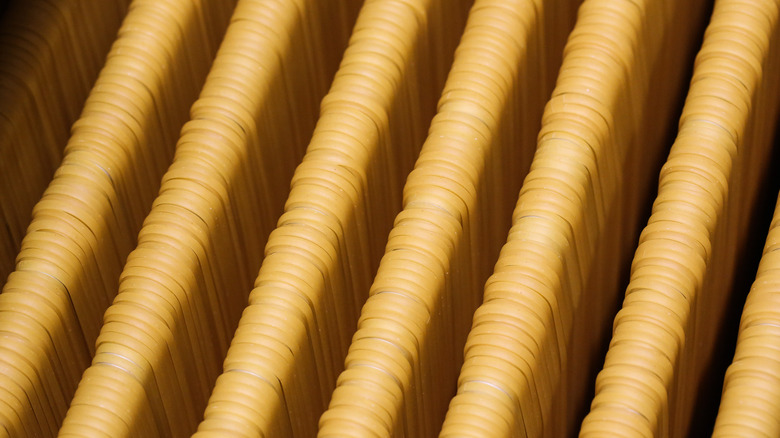Why Does Expensive Pasta Taste So Much Better?
When you want to please a crowd, pasta is a great option — as long as you avoid common pasta mistakes. Plus, it's easy to make in bulk and can suit a range of vegetarian and other special diets. Though many brands are affordable, you may have heard chefs and other personalities sing the praises of more expensive pasta varieties. When you really want to impress your guests, is it worth splurging extra dollars on a fancier brand? Will it actually be higher quality, or are you just paying for a prettier b?
If you've been wondering about this, we have the answer for you: Yes, there is a huge difference between expensive pasta and cheaper alternatives. Experts across the board agree that when you shell out more money for that pricier pasta, you will definitely taste the difference (via Bon Appétit). First off, even before you buy, you should be able to see that the premium brands don't look the same as the lower-priced ones. Chef and pasta expert Matt Abdoo told Epicurious that when you're shopping for dried pasta, the color should be a "warm yellow," matching the high-quality, better-tasting durum flour used in the dough. An overly bright, artificial-looking yellow is a sign of industrial, massed-produced pasta, while a super pale color could indicate the use of a so-so flour.
Expensive pasta is made more, well, expensively
Besides the type of flour used, another factor that makes expensive pasta taste better is the drying process. Per The New York Times, good pasta is gently dried for more than an entire day, which helps the flavor and nutritional properties of the flour stay intact. A speedy, industrial drying process, on the other hand, zaps these qualities away with a higher temperature. Per Bon Appétit, slow-drying also leaves the pasta more porous — meaning it has small holes that will better absorb sauce. This results in a pasta dish that's more cohesive, flavorful, and delicious. And perhaps most importantly, this process allows for a more al dente, or "to the tooth," texture instead of a mushy one.
Another quality hint: Superior pasta will have a rougher texture and more matte appearance than smooth and glossy industrial pasta. This is because artisanal pasta makers tend to use brass and bronze dies, or molds, to extrude the dough into various shapes. These dies naturally impart their texture onto the pasta, giving it a more interesting mouthfeel and better surface for sauce to stick to. Cheaper brands, meanwhile, generally use Teflon dies because the dough goes through them more quickly, explains HuffPost. The next time you see rough, dull, pale yellow pasta at the store, know that its higher price tag doesn't lie.

